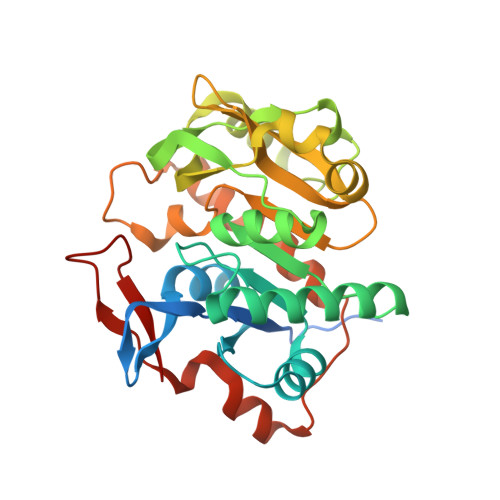Structural insights into the hydrolysis and polymorphism of methotrexate polyglutamate by zebrafish gamma-glutamyl hydrolase
Chuankhayan, P., Kao, T.-T., Lin, C.-C., Guan, H.-H., Nakagawa, A., Fu, T.-F., Chen, C.-J.(2013) J Med Chem 56: 7625-7635
- PubMed: 24028568
- DOI: https://doi.org/10.1021/jm401013e
- Primary Citation of Related Structures:
4L7Q, 4L8F, 4L8W, 4L8Y, 4L95 - PubMed Abstract:
γ-Glutamyl hydrolases (γGH) catalyze the hydrolysis of γ-linked glutamate residues from the polyglutamyl of folates and antifolates, such as methotrexate (MTX), a widely used anticancer drug. We describe the first crystal structures of the endopeptidase-type γGH (zγGH) from zebrafish and the mutant complexes with MTX(Glu)5 and hydrolyzed MTX(Glu)1, revealing the complete set of key residues involved in hydrolysis as well as the substrate-binding subsites (-1 to +2). The side chain of Phe20 and the 6-methylpterin ring of MTX(Glu)5 invoke π-π interactions to promote distinct concerted conformational alterations involving ∼90° rotations in the complexes with the zγGH-C108A and zγGH-H218N mutant proteins. The structural geometries of the MTX(Glu)5 and hydrolyzed MTX(Glu)1 in the mutant complexes differ significantly from those of the previously known MTX(Glu)1, providing polymorphic information. Together with the structural comparison and the activity analysis, these results shed light on the catalytic mechanism and substrate recognition of zγGH and other γ-glutamyl hydrolases.
Organizational Affiliation:
Life Science Group, Scientific Research Division, National Synchrotron Radiation Research Center , Hsinchu 30076, Taiwan.















